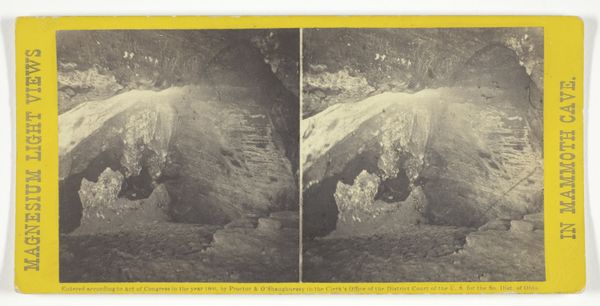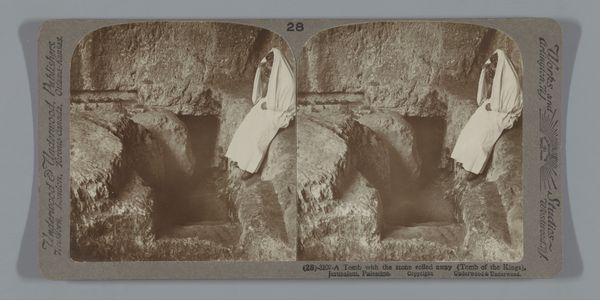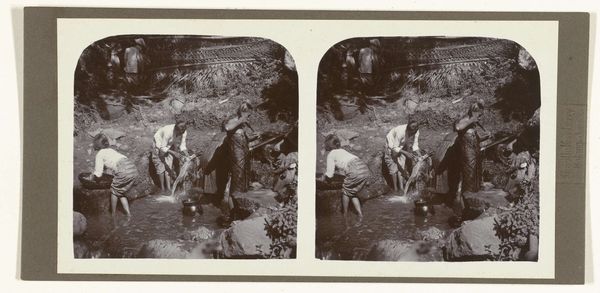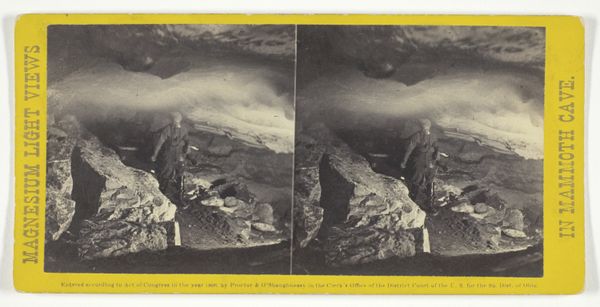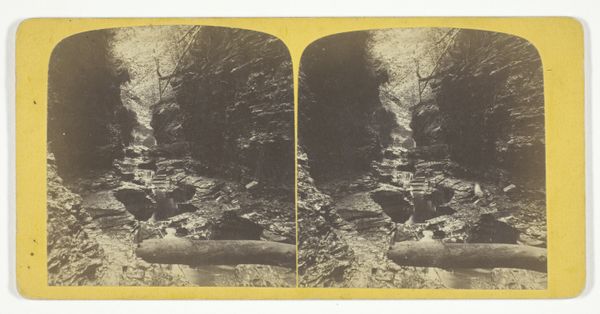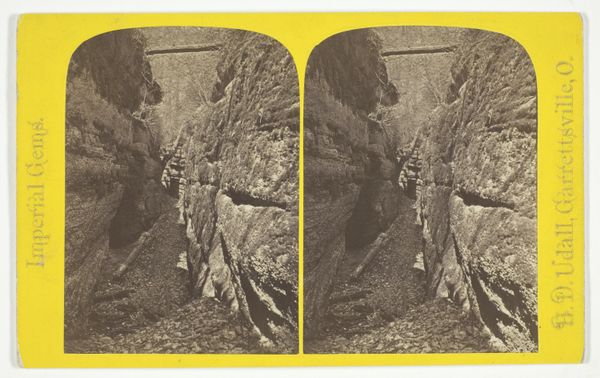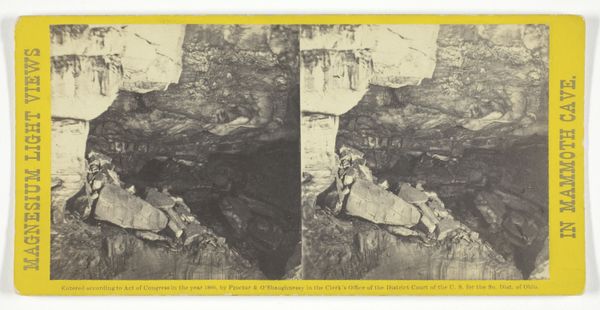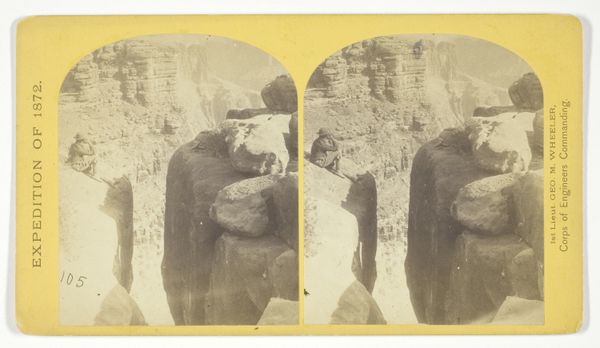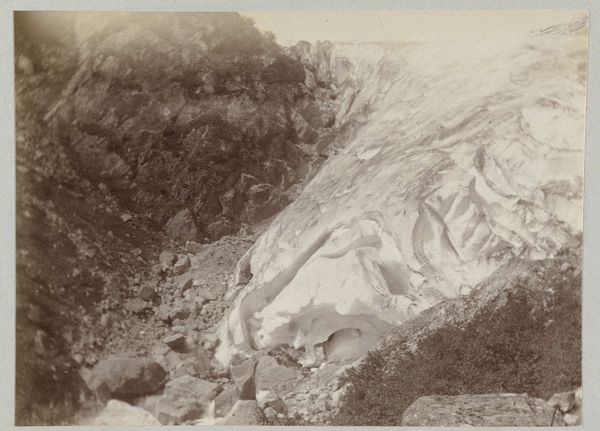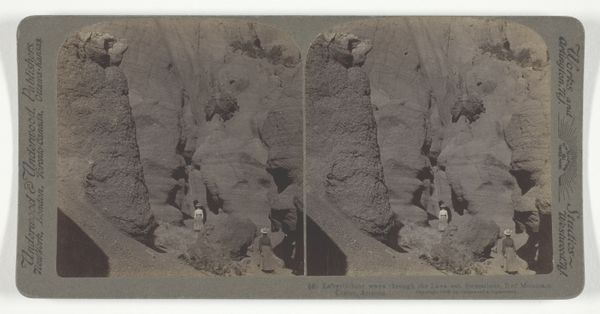
photography, gelatin-silver-print
#
sculpture
#
landscape
#
photography
#
orientalism
#
gelatin-silver-print
Dimensions: height 88 mm, width 177 mm
Copyright: Rijks Museum: Open Domain
Editor: Here we have an intriguing gelatin-silver print, titled "Twee vrouwen bij de tombe in de Graftuin, nabij Jeruzalem," or "Two women at the tomb in the Garden of the Sepulchre, near Jerusalem," dating from around 1900-1905. It’s presented as a stereoscopic image, almost like a view-master card. The photograph depicts two women draped in white robes seated near what appears to be a cave entrance. The scene feels staged, theatrical almost. What stands out to you when you look at this? Curator: It's fascinating how this photograph, likely intended for a Western audience, engages in a visual dialogue heavily shaped by its socio-political context. We see Orientalism at play here. How does staging the scene with those figures performing grief arguably perpetuate existing power dynamics and shape perceptions of the Holy Land? Editor: So, it's not just a record, but a construction? Curator: Precisely. Photography, even in its supposedly objective gaze, is always implicated in the politics of imagery. The composition itself guides the viewer’s eye, prompting us to contemplate the women and the setting in a particular way. Consider where this image was distributed, like through Underwood & Underwood—how did these mass-produced images contribute to or reinforce Western attitudes towards the Middle East? What role did these images play in shaping public imagination? Editor: That’s a good point. The mass distribution makes it less a personal artistic statement and more of a vehicle for broader cultural ideas. Curator: Exactly! It’s about understanding how such images functioned within the visual culture of the time, solidifying certain narratives while potentially marginalizing others. Do you think this type of photography has similar impacts today? Editor: Absolutely. Social media images are equally powerful, if not more so, in shaping perceptions. Thank you, I will definitely think about art with the context and audience in mind moving forward. Curator: And I will remember how pervasive these visual cues have become, especially in photography, regardless of intention.
Comments
No comments
Be the first to comment and join the conversation on the ultimate creative platform.

